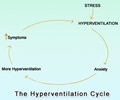A new study has shown that harnessing a powerful protein can potentially halt necrosis may prevent cancer, stroke, and other neurological diseases.
A new study has shown that harnessing a powerful protein called SRP-6 that can potentially halt necrosis —a chaotic, irreversible pathway to cell death — may prevent cancer, stroke, and other neurological diseases like Alzheimer’s and Parkinson’s diseases.
While scientists have for long believed that cell death related to stroke or heart attack cannot be repaired, the study at the University of Pittsburgh School of Medicine has found evidence to the contrary.“For years, we believed that cell death related to a catastrophic insult such as a stroke or heart attack that deprives tissue of oxygen couldn’t really be treated, so we focused on strategies to prevent further damage by restoring blood flow as quickly as possible with clot busters and surgery,” said Dr. Gary A. Silverman, chief of newborn medicine in the department of pediatrics at the Pitt School of Medicine.
“But our research indicates that necrosis can be interrupted and possibly repaired, even after the injury process is well underway. This insight has exciting implications for the management of heart disease, stroke and neurological illnesses,” added the senior author of the study published in the journal Cell.
The remarkable molecular trigger, SRP-6, is a serine protease inhibitor or serpin.
Dr. Silverman and his colleagues illustrated the devastating consequences of cellular stress in Caenorhabditis elegans (C. elegans), a primitive organism whose complete genetic code has been sequenced, when the crucial protector SRP-6 is missing.
A cascade of cell necrosis begins in SRP-6-deficient animals exposed to a number of different stressors such as water, heat and lack of oxygen, say the researchers.
“Animals with normal genetic sequences are fine in water, but the knock-out animals usually die rapidly,” said Dr. Luke, explaining that the observation led him to realize the importance of SRP-6 in protecting the lysosome, an internal cell structure enclosed in its own protective membrane that acts as the cell’s garbage disposal.
The researchers found that SRP-6 staves off necrosis by protecting the lysosome membrane from damage caused by the calpain family of cysteine proteases, and by neutralizing other cysteine proteases released from injured cellular structures called organelles as they are being digested by the lysosome.
Dr. Silverman and colleagues labelled enzymes within the lysosomes of SRP-6-deficient animals with a fluorescent biomarker to observe how they reacted after an injury to the critical structure.
“The lysosomes popped, released their contents into the cell and these digestive enzymes began to activate, making the whole animal fluoresce. Again, this experiment showed the importance of SRP-6 in management of the necrosis pathway,” said Dr. Silverman.
“There are a lot of diseases associated with cell necrosis, such as stroke, neurodegenerative diseases and NEC, and now we know that the pathway to necrosis is much more systematic than we once thought it was. With further study, we may be able to identify targets of intervention to halt the necrotic progression in some of these diseases and possibly even prevent them,” said ,” said Dr. Cliff J. Luke, assistant professor of pediatrics at Pitt.
Source-ANI
SRM/S
 MEDINDIA
MEDINDIA
 Email
Email










